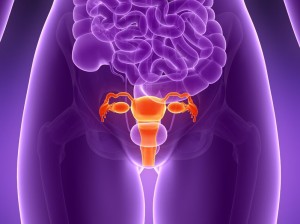 A study published online in the International Journal of Cancer earlier this month describes a novel approach to preventing cervical cancer based on findings showing successful reduction in the risk of cervical cancer after removal of a discrete population of cells in the cervix.
A study published online in the International Journal of Cancer earlier this month describes a novel approach to preventing cervical cancer based on findings showing successful reduction in the risk of cervical cancer after removal of a discrete population of cells in the cervix.
The findings come from a study that looked at squamocolumnar junction cells, or SCJ cells. These cells reside in the cervical canal and have been implicated as the origins of cervical cancer. A research team co-led by Christopher Crum, MD, director, Brigham and Women’s Hospital (BWH) Women’s and Perinatal Pathology, demonstrated that removal of SCJ cells resulted in a markedly lower risk of cervical intraepithelial neoplasia-a non-cancerous, abnormal growth of cells on the surface of the cervix that may progress to cervical cancer.
One hundred and thirty-one women with cervical intraepithelial neoplasia were treated with a loop electrosurgical excision procedure to remove the SCJ cells. During the follow-up period (of up to four years), 16 recurrences were identified. Four were identified at the first follow-up visit, and determined to be residual disease, meaning they were not removed in the initial procedure. Twelve manifested after the first postoperative visit and all were in the ectocervix or in mature metaplastic epithelium. All of the 12 delayed recurrences were cervical intraepithelial neoplasias and did not have SCJ cells.
“We have always suspected that most recurrences following apparently successful therapy do not develop in the same location as the original precancer, which was at the squamocolumnar junction,” said Crum. “Moreover, studies in the literature have shown that the risk of a significant precancer following successful removal is quite low. Our study is in sync with these observations and suggests that removing SCJ cells might have a significant impact in reducing the risk of cervical cancer.”
Crum emphasizes that eliminating SCJ cells does not prevent cervical intraepithelial neoplasias nor does it prevent human papilloma virus (HPV) infection-which can lead to cervical cancer. But what is significant about the findings, according to the researchers, is that removal of SCJ cells seems to alter recurrence patterns, presumably by removing the population that is most vulnerable to development of the more dangerous precancers.
“This is a concept that is in great need of a controlled clinical trial aimed at prevention rather than treatment,” said Crum. “It would give us important insights into whether preemptive removal of the SCJ region would have the desired effect.”
An accompanying editorial, by Silvia Franceschi, MD, International Agency for Research on Cancer, suggests continuation of the work by “careful evaluation of the impact of prophylactic ablation in the framework of large screening programmes.”
This study was supported by the Belgian Fund for Medical Scientific Research, Centre Anti-Cancereux près l’Université de Liège, Faculty of Medicine of the University of Liège, National Cancer Institute (1R21CA173190-01), and Fonds Léon Frédéricq.
Source: Unique recurrence patterns of cervical intraepithelial neoplasia after excision of the squamocolumnar junction, International Journal of Cancer, 2014 http://bit.ly/UBd6EO











